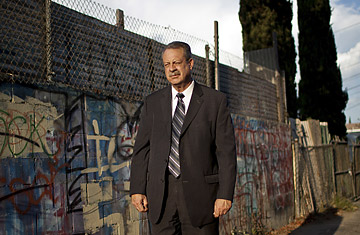
(4 of 7)
In May 2007 police chief William Bratton called on Kilcoyne to set up a task force to track down the serial killer. Kilcoyne, one of the LAPD's top detectives, was the obvious choice to take over. He had been on the force 30 years and had worked some 400 murders. Bratton gave him eight detectives and a crime analyst full time--a huge allocation of resources for the LAPD. "I told them to go out and reinvestigate each murder with fresh eyes," Kilcoyne says.
As pressure for results intensified from victims' relatives and terrified neighborhood residents, Kilcoyne's task force tracked down retired mailmen from the district to see if they remembered anything suspicious. They exhumed the body of a pastor with a reputation as a womanizer who had died after the last murder to see if his DNA matched. (It didn't.) They got vice cops to scoop up men of a certain age who approached working girls in the area. Kilcoyne developed 400 new suspects, collecting DNA from many of them by using cigarette butts or personal items discarded in public, but for three years nothing panned out. "We were hitting our heads against the wall," he says. "It was very frustrating. We were all on blood-pressure pills."
He kept coming back to the killer's DNA, collected from seven of his victims: "We had this beautiful DNA profile on somebody, and we just didn't have a name or a face to go with it." He didn't know much about DNA, but he knew someone who did--Jill Spriggs, chief of California's bureau of forensic services, in Sacramento.
Spriggs is a striking figure--tall with a piercing stare and a degree in forensic science and chemistry, as well as an M.B.A. She could have walked off the set of CSI, except that she hates the show. "You can't solve cases in 60 minutes," she says--and the illusion that you can "creates unreal expectations among jurors." Spriggs has 440 staffers working in 13 laboratories around the state and a budget of $85 million. She knew the Grim Sleeper's DNA was not among the 10 million samples in the FBI CODIS database, but she had another idea, familial DNA searching.
Standard forensic DNA testing--familiar to all CSI watchers--involves seeking a direct match between DNA found at a crime scene and the DNA of a suspect. It was first used in a criminal investigation in 1986. Since 2002, forensic scientists in the U.K. had been working on a new type of DNA analysis that uses sophisticated software to search databases for DNA of a suspect's close relatives if they cannot get a direct hit. No two people have the same DNA, apart from identical twins--and even they may have some variations, according to recent research. But parents, children and siblings generally share more DNA traits than unrelated people, and computers can identify those shared patterns. Even if the actual offender is not in any DNA database, a close relative might be, allowing police to construct a family tree, seek out relatives who could have been in a position to carry out the crime and, with a little luck, make the leap to a legitimate suspect.
